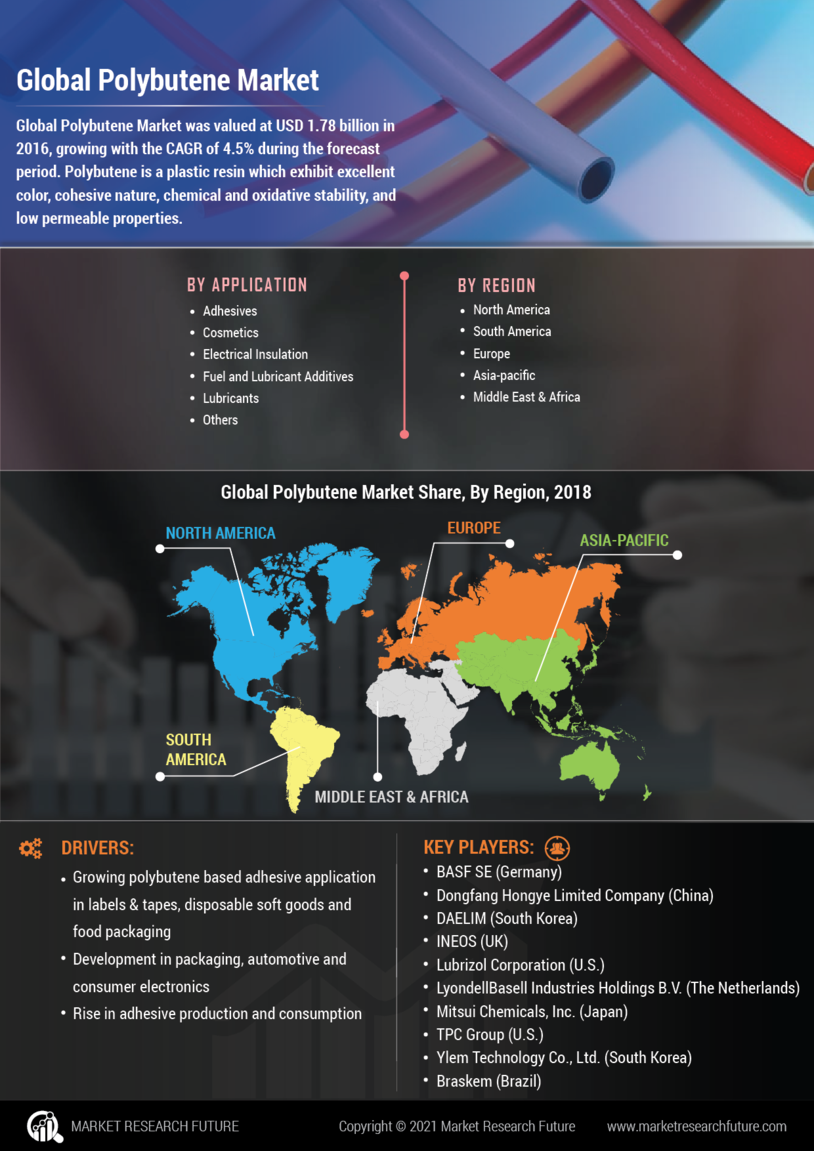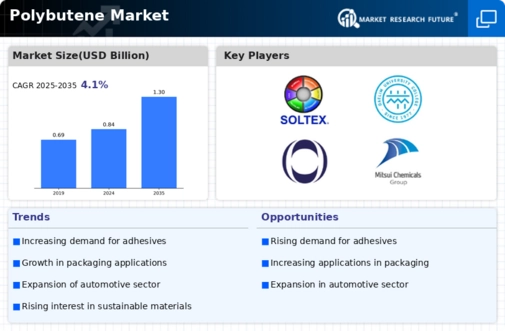Expansion in Packaging Applications
The Polybutene Market is witnessing a surge in the use of polybutene in packaging applications, particularly in flexible packaging solutions. The material's excellent barrier properties and sealability make it a preferred choice for food and beverage packaging, which is projected to grow at a CAGR of 4.5% through 2025. This growth is largely attributed to the rising consumer demand for convenience and sustainability in packaging. Additionally, the shift towards eco-friendly materials is prompting manufacturers to explore polybutene as a viable alternative to traditional plastics. The increasing focus on reducing plastic waste and enhancing recyclability is likely to further drive the adoption of polybutene in the packaging sector. As a result, the Polybutene Market is expected to benefit from these trends, positioning itself as a key player in the evolving packaging landscape.
Growing Interest in Renewable Resources
The Polybutene Market is increasingly aligning with the global trend towards sustainability and renewable resources. The development of bio-based polybutene is gaining traction, as manufacturers seek to reduce their carbon footprint and meet regulatory requirements. This shift is indicative of a broader movement within the polymer industry, where the emphasis on sustainable materials is becoming paramount. In 2025, it is anticipated that bio-based polybutene could capture up to 10% of the market share, driven by consumer preferences for environmentally friendly products. Additionally, the potential for reduced reliance on fossil fuels in polybutene production may further enhance its appeal. As the industry adapts to these changes, the Polybutene Market is likely to see a diversification of its product offerings, catering to a more environmentally conscious consumer base.
Rising Demand in Adhesives and Sealants
The Polybutene Market is experiencing a notable increase in demand for adhesives and sealants, primarily driven by the construction and automotive sectors. Polybutene Market's unique properties, such as flexibility and adhesion strength, make it an ideal choice for various applications. In 2025, the adhesives segment is projected to account for approximately 30% of the total polybutene consumption, reflecting a growing trend towards high-performance materials. This shift is likely influenced by the need for durable and efficient bonding solutions in modern construction practices. Furthermore, the automotive industry's push for lightweight materials is expected to bolster the use of polybutene in sealants, enhancing vehicle performance and fuel efficiency. As these sectors continue to expand, the Polybutene Market is poised for significant growth, driven by the increasing adoption of polybutene-based products.
Technological Advancements in Production
The Polybutene Market is being significantly influenced by technological advancements in production processes. Innovations in polymerization techniques and catalysts are enhancing the efficiency and quality of polybutene manufacturing. These advancements are expected to reduce production costs and improve the material's properties, making it more competitive against other polymers. In 2025, the introduction of new production technologies could potentially increase the overall output of polybutene by 15%, meeting the rising demand across various sectors. Furthermore, these technologies may enable the development of specialized grades of polybutene, catering to niche applications in industries such as healthcare and electronics. As manufacturers adopt these cutting-edge technologies, the Polybutene Market is likely to experience a transformation, fostering growth and expanding its application scope.
Increased Investment in Research and Development
The Polybutene Market is benefiting from increased investment in research and development (R&D) activities. Companies are allocating substantial resources to innovate and enhance polybutene formulations, aiming to improve performance characteristics and expand application areas. This focus on R&D is crucial, as it allows manufacturers to stay competitive in a rapidly evolving market. In 2025, it is projected that R&D expenditures in the polybutene sector could rise by 20%, reflecting the industry's commitment to innovation. Such investments are likely to lead to the introduction of advanced polybutene products with superior properties, catering to specific industry needs. Moreover, collaboration between academic institutions and industry players may foster breakthroughs in polybutene applications, further propelling the growth of the Polybutene Market.


















Leave a Comment